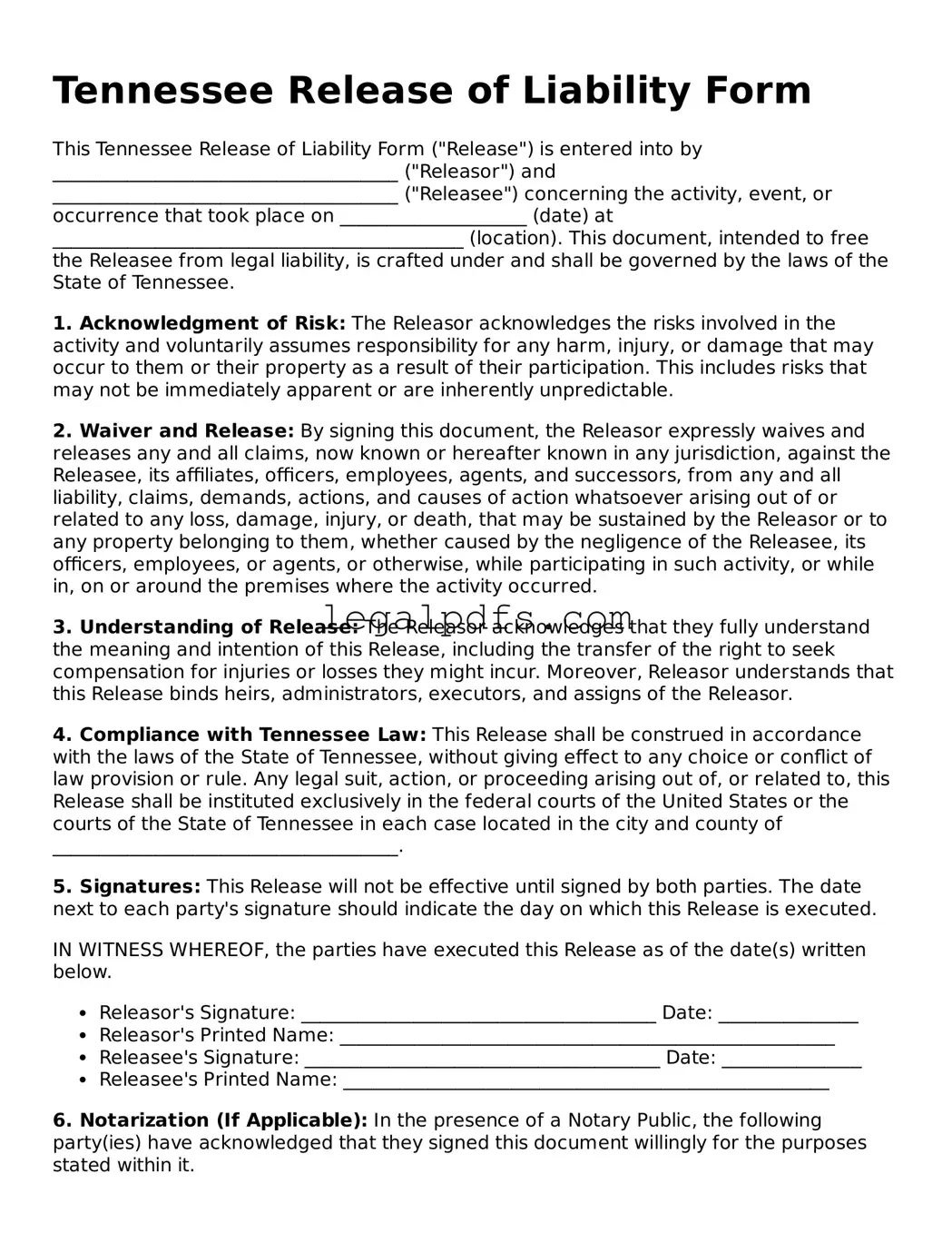Tennessee Release of Liability Form
This Tennessee Release of Liability Form ("Release") is entered into by _____________________________________ ("Releasor") and _____________________________________ ("Releasee") concerning the activity, event, or occurrence that took place on ____________________ (date) at ____________________________________________ (location). This document, intended to free the Releasee from legal liability, is crafted under and shall be governed by the laws of the State of Tennessee.
1. Acknowledgment of Risk: The Releasor acknowledges the risks involved in the activity and voluntarily assumes responsibility for any harm, injury, or damage that may occur to them or their property as a result of their participation. This includes risks that may not be immediately apparent or are inherently unpredictable.
2. Waiver and Release: By signing this document, the Releasor expressly waives and releases any and all claims, now known or hereafter known in any jurisdiction, against the Releasee, its affiliates, officers, employees, agents, and successors, from any and all liability, claims, demands, actions, and causes of action whatsoever arising out of or related to any loss, damage, injury, or death, that may be sustained by the Releasor or to any property belonging to them, whether caused by the negligence of the Releasee, its officers, employees, or agents, or otherwise, while participating in such activity, or while in, on or around the premises where the activity occurred.
3. Understanding of Release: The Releasor acknowledges that they fully understand the meaning and intention of this Release, including the transfer of the right to seek compensation for injuries or losses they might incur. Moreover, Releasor understands that this Release binds heirs, administrators, executors, and assigns of the Releasor.
4. Compliance with Tennessee Law: This Release shall be construed in accordance with the laws of the State of Tennessee, without giving effect to any choice or conflict of law provision or rule. Any legal suit, action, or proceeding arising out of, or related to, this Release shall be instituted exclusively in the federal courts of the United States or the courts of the State of Tennessee in each case located in the city and county of _____________________________________.
5. Signatures: This Release will not be effective until signed by both parties. The date next to each party's signature should indicate the day on which this Release is executed.
IN WITNESS WHEREOF, the parties have executed this Release as of the date(s) written below.
- Releasor's Signature: ______________________________________ Date: _______________
- Releasor's Printed Name: _____________________________________________________
- Releasee's Signature: ______________________________________ Date: _______________
- Releasee's Printed Name: ____________________________________________________
6. Notarization (If Applicable): In the presence of a Notary Public, the following party(ies) have acknowledged that they signed this document willingly for the purposes stated within it.
NOTARY PUBLIC's Signature: ______________________________________ Date: _______________
Seal:
